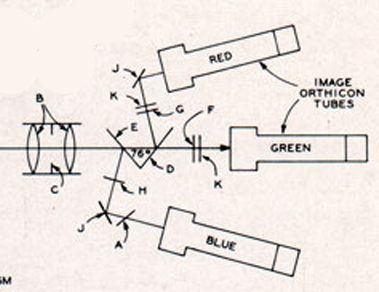|
|
 
|
|
Author
|
Topic: Barco DP4K-60L Contrast Question
|
|
|
|
|
|
|
Carsten Kurz
Film God
Posts: 4340
From: Cologne, NRW, Germany
Registered: Aug 2009
|
 posted 01-17-2016 07:22 AM
posted 01-17-2016 07:22 AM




True, the DP4k-xxL machines perform just on the upper end (or lower end, if you want to put it like that) of DLP black levels, but not further. At least in 4k, they are considerably better than ordinary 4k xenon DLPs, which hardly reach 2000:1.
People seem to think that the buzzword 'laser' takes care of every possible issue that projection might have, but that is not true, there are even a few extra issues with laser light sources that need to be solved.
IMAX so far is the only DCI oriented company with a completely redesigned light engine for their laser projectors that uses no prism and achieves higher contrast and black levels. These machines have been developed with Barco, but as far as the light engine goes, they seem to be completely different from Barcos own brand laser projectors. Dolby Vision cinemas achieve high contrast by utilizing cascaded DLPs in a sort of 'pixel level local dimming' approach. But both Dolby Vision and IMAX LIPs are considerably more expensive than already the DP4K-60L is.
That said, the 60L delivers a stunning 3D when Barcos color separation 3D is used.
- Carsten
| IP: Logged
|
|
|
|
|
|
|
|
|
|
|
|
|
|
|
|
|
|
|
|
|
|
All times are Central (GMT -6:00)
|
|
Powered by Infopop Corporation
UBB.classicTM
6.3.1.2
The Film-Tech Forums are designed for various members related to the cinema industry to express their opinions, viewpoints and testimonials on various products, services and events based upon speculation, personal knowledge and factual information through use, therefore all views represented here allow no liability upon the publishers of this web site and the owners of said views assume no liability for any ill will resulting from these postings. The posts made here are for educational as well as entertainment purposes and as such anyone viewing this portion of the website must accept these views as statements of the author of that opinion
and agrees to release the authors from any and all liability.
|

 Home
Home
 Products
Products
 Store
Store
 Forum
Forum
 Warehouse
Warehouse
 Contact Us
Contact Us




 Printer-friendly view of this topic
Printer-friendly view of this topic











